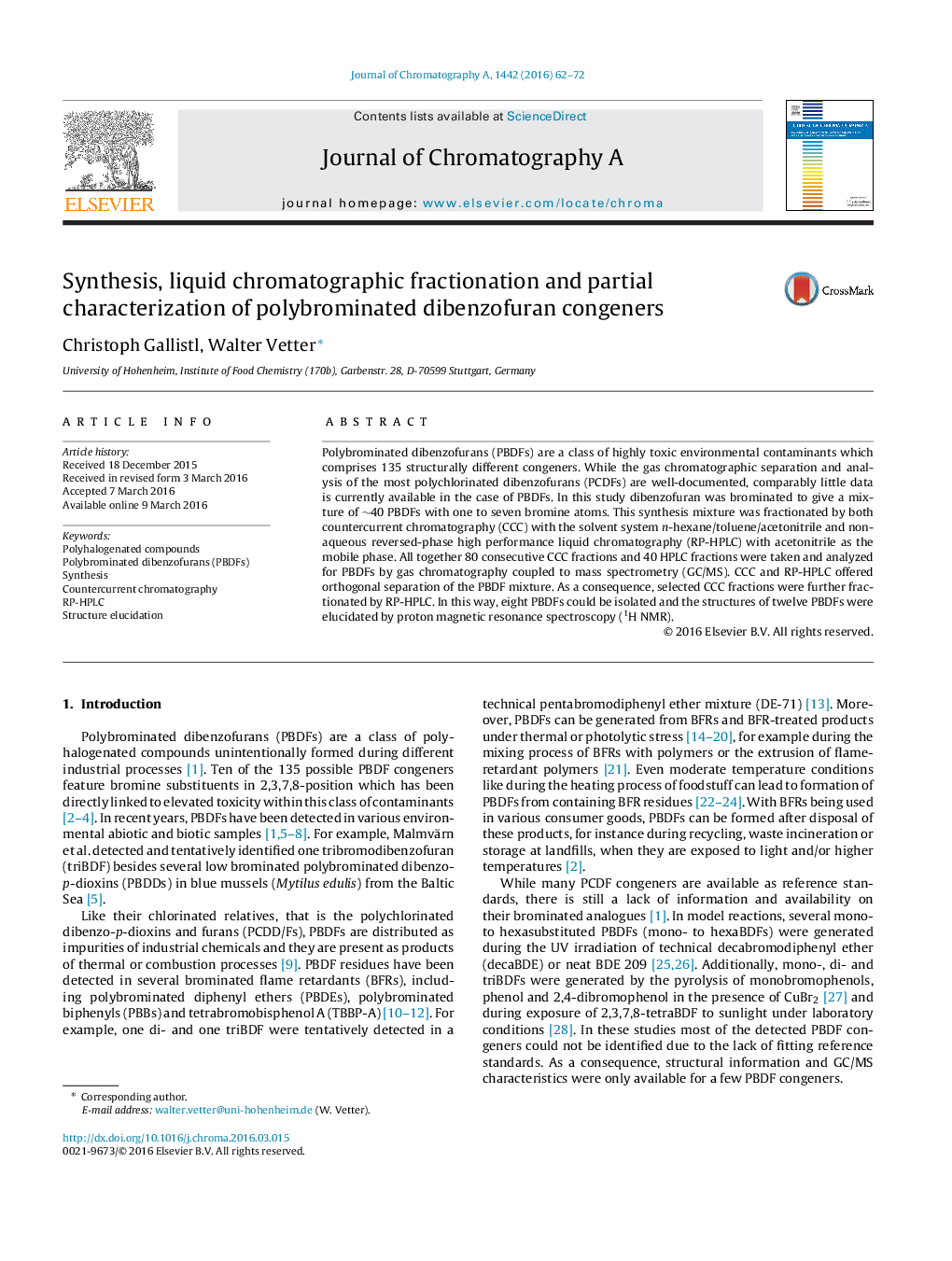| Article ID | Journal | Published Year | Pages | File Type |
|---|---|---|---|---|
| 1198701 | Journal of Chromatography A | 2016 | 11 Pages |
•Dibenzofuran was brominated to a mixture of 40 polybrominated dibenzofurans (PBDFs).•The mixture was separated by countercurrent chromatography (CCC) and RP-HPLC.•Both liquid chromatographic methods showed orthogonal separation characteristics.•PBDFs were isolated from selected CCC fractions by subsequent RP-HPLC.•Twelve PBDFs were characterized by 1H NMR.
Polybrominated dibenzofurans (PBDFs) are a class of highly toxic environmental contaminants which comprises 135 structurally different congeners. While the gas chromatographic separation and analysis of the most polychlorinated dibenzofurans (PCDFs) are well-documented, comparably little data is currently available in the case of PBDFs. In this study dibenzofuran was brominated to give a mixture of ∼40 PBDFs with one to seven bromine atoms. This synthesis mixture was fractionated by both countercurrent chromatography (CCC) with the solvent system n-hexane/toluene/acetonitrile and non-aqueous reversed-phase high performance liquid chromatography (RP-HPLC) with acetonitrile as the mobile phase. All together 80 consecutive CCC fractions and 40 HPLC fractions were taken and analyzed for PBDFs by gas chromatography coupled to mass spectrometry (GC/MS). CCC and RP-HPLC offered orthogonal separation of the PBDF mixture. As a consequence, selected CCC fractions were further fractionated by RP-HPLC. In this way, eight PBDFs could be isolated and the structures of twelve PBDFs were elucidated by proton magnetic resonance spectroscopy (1H NMR).
